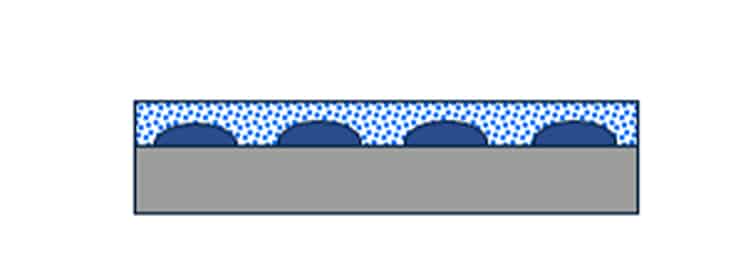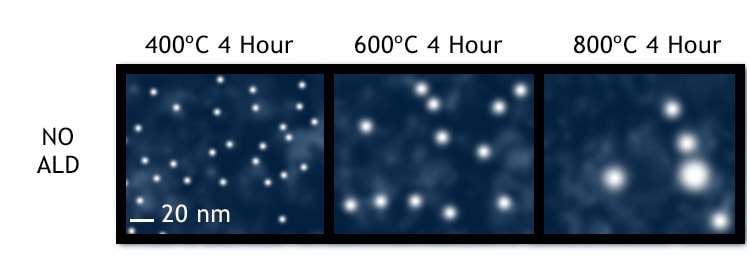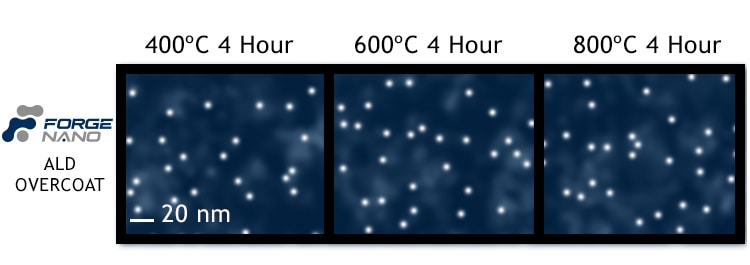Catalysts play a profoundly vital role in major industrial sectors of the world’s economy, such as petroleum (oil and gas), chemicals production (e.g., polymers/plastics), and even the food industry. Data suggest we can design a catalyst that is extremely stable, robust and more selective to reduce the energy consumption of chemical manufacturing. To do that we need to understand the relationship of the ALD overcoating to selectivity and stability through kinetics and thermodynamics measurements and calculations with real world process variability considerations.
One impressive benefit of the ALD overcoating is the selectivity enhancement. Better selectivity means cheaper, more efficient production of consumer goods. It also means less environmental impact by reducing greenhouse gas emissions. Forge Nano will reduce the energy footprint of a wide array of commodity and specialty chemical manufacturing processes using atomic layer deposition.
LEARN MORE
Lifetime, sinter resistant, coke resistant
Product stream value, process efficiency
Production rate, process scale
• Minimized metal nanoparticle leaching
• Higher overall catalytic activity
• Reduced thermal degradation
• Decreased active site sintering
• >100% Increased catalyst lifetime due to decreased deactivation
• Greater selectivity between chemical reactions

Using ALD to create an interface layer underneath the active catalyst will help sustain longer lifetime and thermal stability.
By depositing a thin film onto a high surface area substrate without adversely affecting pore size or morphology, ALD can be used to modify surface acidity/basicity and prevent dissolution of the active catalyst into the substrate material.
In one example, ALD modified substrates demonstrated improved catalytic activity, lifetime and selectivity for oxidative dehydrogenation of propane compared to bulk silica or alumina substrates.

ALD is also effective for depositing uniform films as a protective overcoat onto the catalyst while additionally improving catalytic performance.
Depositing thin oxide films such as Al2O3, TiO2,NbOx, NiO, ZrO2 or Co3O4 protects catalyst integrity during high temperature reaction conditions while inhibiting metal degradation, sintering, and leaching.
In one example, alumina ALD overcoat layers preserved and enhanced catalytic activity of Pd nanoparticles while preventing sintering up to 500ºC.

ALD has been found to be useful in depositing catalyst materials such as Pd, Pt, Ni, Rh, Fe, Ir and Ru onto ultra-high surface area base supports.
The high surface energy of the catalyst materials allows small “islands” to form on the base support, creating a high dispersion of active material while maintaining ultra-low loading for reduced material costs. Unlike wet chemical synthesis techniques, ALD can penetrate ultra-high aspect ratio pores in catalyst supports and achieve uniform deposition.
In addition, ALD can be controlled for near surface deposition for the manufacturing of eggshell structured catalyst.


Lifetime of catalyst of platinum group metals (PGM) extended greater than 100% by stopping sintering and deactivation mechanisms.
DOWNLOAD CATALYSIS WHITE PAPER
LEARN MORE
Forge Nano Inc. Copyright 2024 © All rights Reserved.